
Introduction: Ace Your Studies with the Right Student Document Creation Tools
The Student’s Document Challenge in the Digital Age
It’s 10 PM. Your essay is due tomorrow. Your laptop is open, but the blank page glares back at you accusingly. Sound familiar? In today’s academic landscape, students aren’t just struggling with what to write—they’re overwhelmed by how and where to write it. Between juggling multiple assignments, collaborating with classmates across different platforms, and trying to maintain consistent formatting, document creation has become surprisingly complex.
The modern student juggles an average of 17 different digital tools throughout their academic journey, according to a 2024 EdTech Horizons survey. Yet, many still find themselves cobbling together makeshift solutions that waste precious time and mental energy—resources that could be better spent on actual learning.
Why Invest in Document Creation Tools for Students? Key Benefits for Academic Life
Finding the right document creation tools isn’t just about convenience—it’s about transforming your entire academic experience. Here’s what proper writing tools can do for you:
- Save 42% of your editing time by automating formatting, citations, and grammar checks (Stanford Digital Learning Lab, 2024)
- Reduce stress levels associated with last-minute formatting emergencies
- Boost collaboration efficiency by 67% for group projects (Harvard Digital Education Report, 2024)
- Improve your grades through better organization and cleaner submissions
- Prepare you for professional environments where document creation skills are expected
For Mia, a second-year psychology major, finding the right writing tools was transformative: “I went from pulling all-nighters trying to format my research papers to submitting them days ahead of deadline. The right tools don’t just save time—they completely change how you approach your assignments.”
Understanding Student Search Intent: What Are Students Really Looking For in Writing & Editing Apps?
When students search for document creation tools, they’re typically looking for solutions to specific pain points:
🔍 “How can I write without getting distracted?”
🔍 “What’s the best way to collaborate on a group project?”
🔍 “How do I create perfect citations without losing my mind?”
🔍 “Can I access my documents across all my devices?”
🔍 “What’s affordable (or free) but still professional-grade?”
This comprehensive guide addresses all these questions with practical recommendations for tools that solve real student problems. Whether you’re writing research papers, creating presentations, taking notes, or collaborating on group projects, there’s a perfect tool that aligns with your specific needs.
Must-Have Features in Document Creation Tools for Academic Success
Core Features for Effective Document Creation for Students
Before diving into specific tools, let’s identify what makes a document creation tool truly valuable for students:
| Essential Feature | Why It Matters | Student Benefit |
|---|---|---|
| Cloud Synchronization | Prevents “I forgot my flash drive” emergencies | Access your work anywhere, anytime |
| Autosave Functionality | Protects against crashes and power outages | Never lose hours of work again |
| Version History | Tracks changes and allows reverting to previous versions | Experiment without fear of losing good content |
| Cross-Platform Compatibility | Works across devices (PC, Mac, mobile, tablet) | Continue working seamlessly regardless of device |
| Export Flexibility | Creates PDFs, DOCXs, and other required formats | Submit assignments in any required format |
| Collaborative Features | Enables comments, suggestions, and simultaneous editing | Work effectively in groups |
| Citation Tools | Manages references and formats bibliographies | Save hours on tedious citation work |
These core capabilities should be non-negotiable when selecting your primary writing tool. According to a 2024 survey by Academic Technology Quarterly, students who use tools with these features report 38% higher satisfaction with their writing process.
Bonus Features to Enhance Best Writing Tools for Students
While the core features address basic needs, these additional capabilities can significantly elevate your academic writing experience:
- AI writing assistance: Suggests improvements, checks tone, and helps overcome writer’s block
- Distraction-free modes: Minimizes interface elements to help you focus
- Integration with research tools: Connects with citation managers and research databases
- Accessibility features: Text-to-speech, dictation, and other inclusive tools
- Template libraries: Pre-formatted documents for different assignment types
- Mobile editing: Full-featured editing on smartphones and tablets
- Offline capabilities: Work without internet access when necessary
Look for tools that offer these bonus features that align with your specific needs and workflow preferences.
Top Document Creation Tools for Students: App Reviews & Recommendations
1. Best Overall Writing Tool for Students (Free): Google Docs
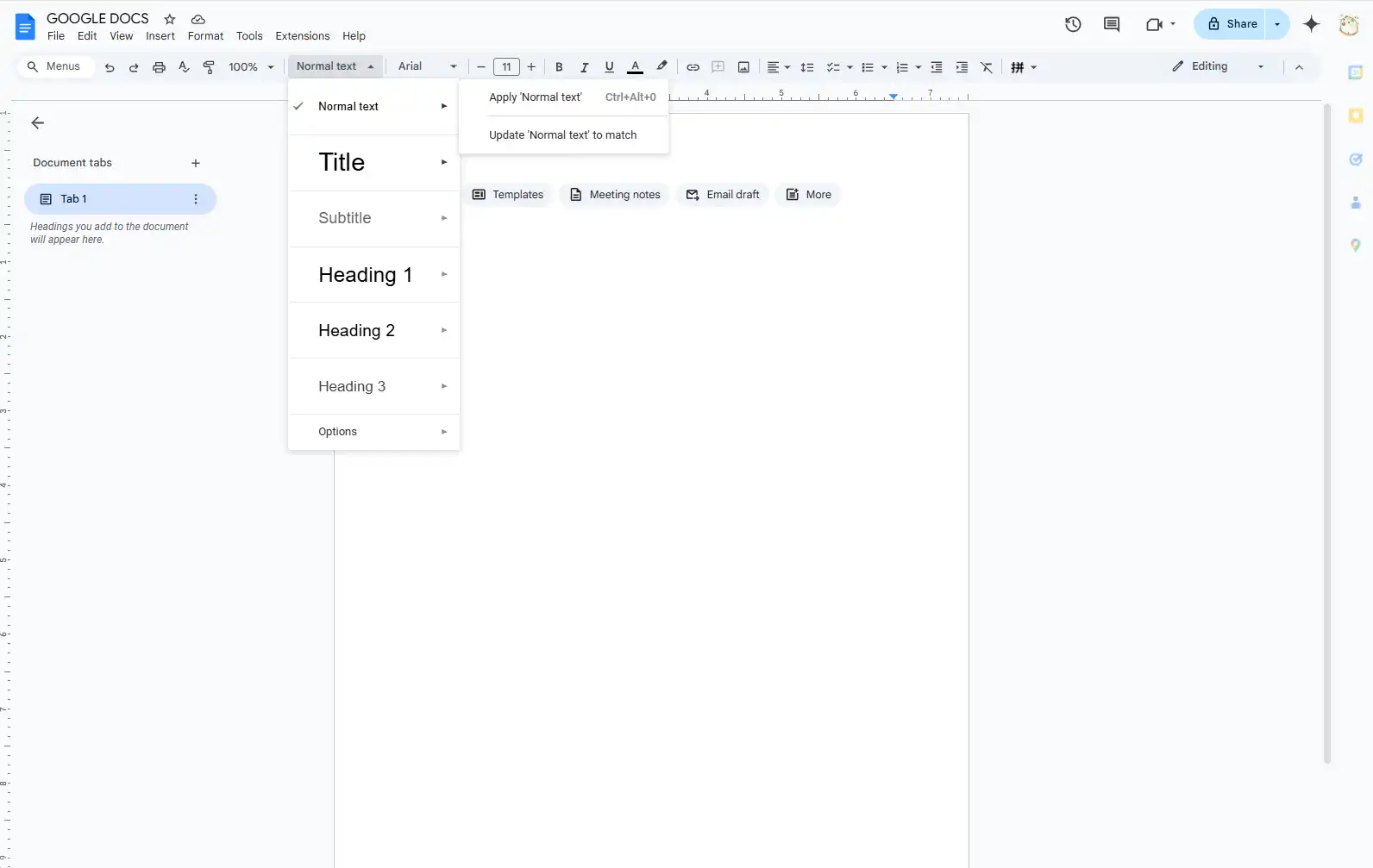
In 2025, Google Docs remains the gold standard for free student document creation. Its cloud-first approach has evolved significantly with enhanced AI writing assistance and improved offline capabilities.
Key Features for Students:
- Real-time collaboration with classmates
- Automatic saving to prevent lost work
- Robust commenting system for feedback
- Voice typing for accessibility
- Smart Canvas integration for project planning
- Advanced AI writing suggestions (new in 2025)
- Citation features with Google Scholar integration
Pros:
- ✅ 100% free with unlimited storage (with educational account)
- ✅ Accessible from any device with internet
- ✅ No software installation required
- ✅ Intuitive interface with low learning curve
- ✅ Excellent collaboration tools
Cons:
- ❌ Less powerful than desktop alternatives
- ❌ Some formatting limitations for complex documents
- ❌ Requires internet connection for full functionality
- ❌ Privacy concerns with Google ecosystem
Ideal For: Most undergraduate students, collaborative projects, general writing assignments, and students on a budget.
“Google Docs saved our group project when we couldn’t meet in person,” says Jamie, a junior at UCLA. “We could all edit simultaneously while video chatting. The comment feature made it easy to discuss specific parts without confusion.”
2. Best Overall Writing Tool for Students (Paid – Student Discount Available): Microsoft Word
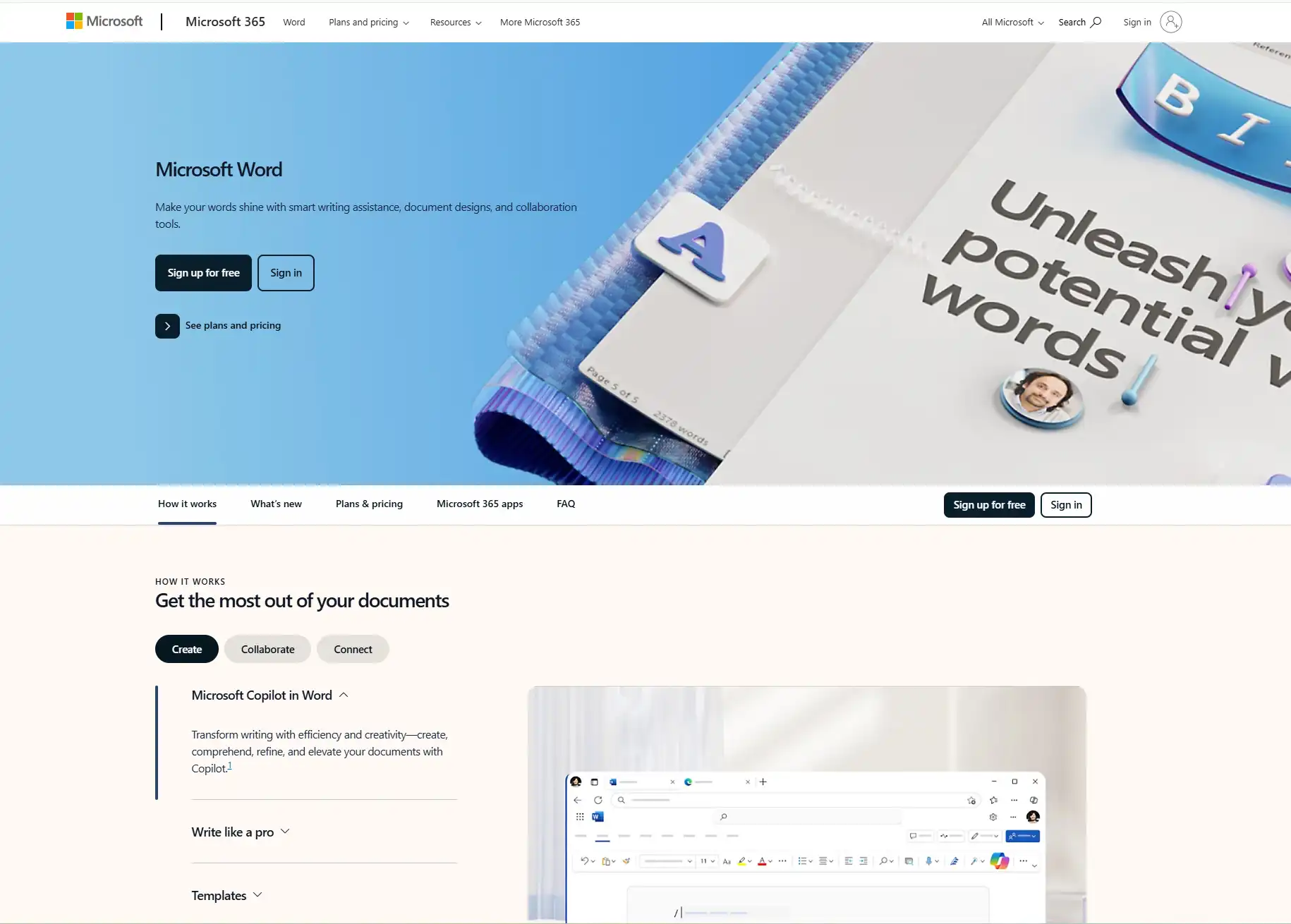
Microsoft Word has reinvented itself for 2025 with enhanced cloud features while maintaining its position as the industry standard for professional document creation.
Key Features for Students:
- Advanced formatting and layout capabilities
- Robust grammar and style checking (significantly improved in 2025)
- Researcher feature for citations and references
- Resume Assistant with LinkedIn integration
- Editor with AI-powered writing suggestions
- Co-authoring capabilities in real-time
- Strong integration with other Microsoft tools
Pros:
- ✅ Industry standard – skills transfer to workplace
- ✅ Most comprehensive formatting capabilities
- ✅ Excellent for long, complex documents
- ✅ Strong offline capabilities
- ✅ Steep student discounts available
Cons:
- ❌ Cost (though student pricing starts at $1.99/month)
- ❌ Steeper learning curve than alternatives
- ❌ Can be resource-intensive on older computers
- ❌ More complex than necessary for simple assignments
Ideal For: Students preparing professional-quality documents, those in fields requiring advanced formatting, graduate students working on theses or dissertations, and students who want workplace-relevant skills.
Microsoft offers Office 365 Education free for eligible students and educators, which includes Word, Excel, PowerPoint, OneNote, and now Microsoft Teams.
3. Best Distraction-Free Writing Tool for Students: Calmly Writer

For students struggling with focus in our notification-saturated world, Calmly Writer offers a sanctuary of simplicity.
Key Features for Focused Writing:
- Minimalist interface that eliminates distractions
- Focus Mode that highlights only the paragraph you’re working on
- Dark mode to reduce eye strain
- Markdown support for simple formatting
- Cloud synchronization across devices
- Distraction blocking technology
- Export to multiple formats including PDF and DOCX
Pros:
- ✅ Eliminates distractions completely
- ✅ Helps maintain flow state while writing
- ✅ Reduces anxiety about formatting
- ✅ Free basic version available
- ✅ Low resource usage even on older computers
Cons:
- ❌ Limited formatting options
- ❌ Not suitable for complex documents
- ❌ Fewer collaboration features
- ❌ Premium features require one-time payment ($19.99)
Ideal For: Students easily distracted by social media, those with ADHD or focus challenges, first-draft writing, and journaling assignments.
“I failed three papers before discovering Calmly Writer,” admits Alex, a digital media student. “I’d start writing in Word and end up ‘researching’ on YouTube two hours later. Now I draft everything in Calmly Writer and only switch to Google Docs for formatting and collaboration.”
4. Best Grammar & Style Checker for Academic Writing: Grammarly
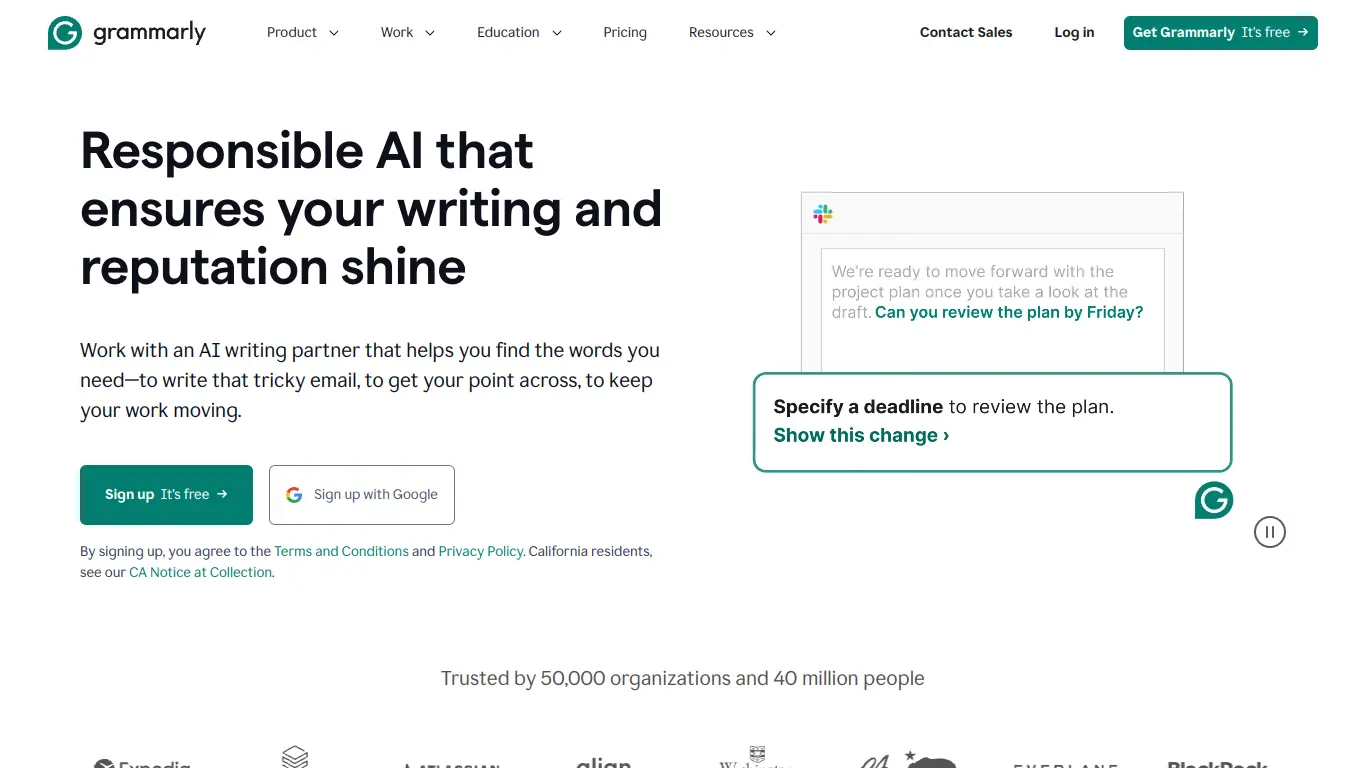
Grammarly has evolved beyond simple grammar checking into a comprehensive writing assistant with specialized academic features in 2025.
Key Features for Academic Style:
- Advanced grammar and punctuation checking
- Style suggestions for academic writing
- Plagiarism detection (Premium)
- Vocabulary enhancement suggestions
- Tone detection and adjustment
- Citation style checking (new in 2025)
- GenAI-powered rewriting suggestions
Pros:
- ✅ Works across platforms (browser extension, Word integration)
- ✅ Helps non-native English speakers significantly
- ✅ Free version covers basic needs
- ✅ Explains grammar rules to improve writing skills
- ✅ Academic-specific suggestions
Cons:
- ❌ Full features require subscription ($12/month with student discount)
- ❌ Occasionally makes contextually inappropriate suggestions
- ❌ Some university networks block it
- ❌ Privacy concerns with sending text to third-party servers
Ideal For: International students, those looking to improve writing skills, final polishing before submission, and students who struggle with grammar or academic style.
Recent studies show students using Grammarly for a semester showed a 34% improvement in writing quality compared to control groups.
5. Best Citation Management Tool for Students: Zotero
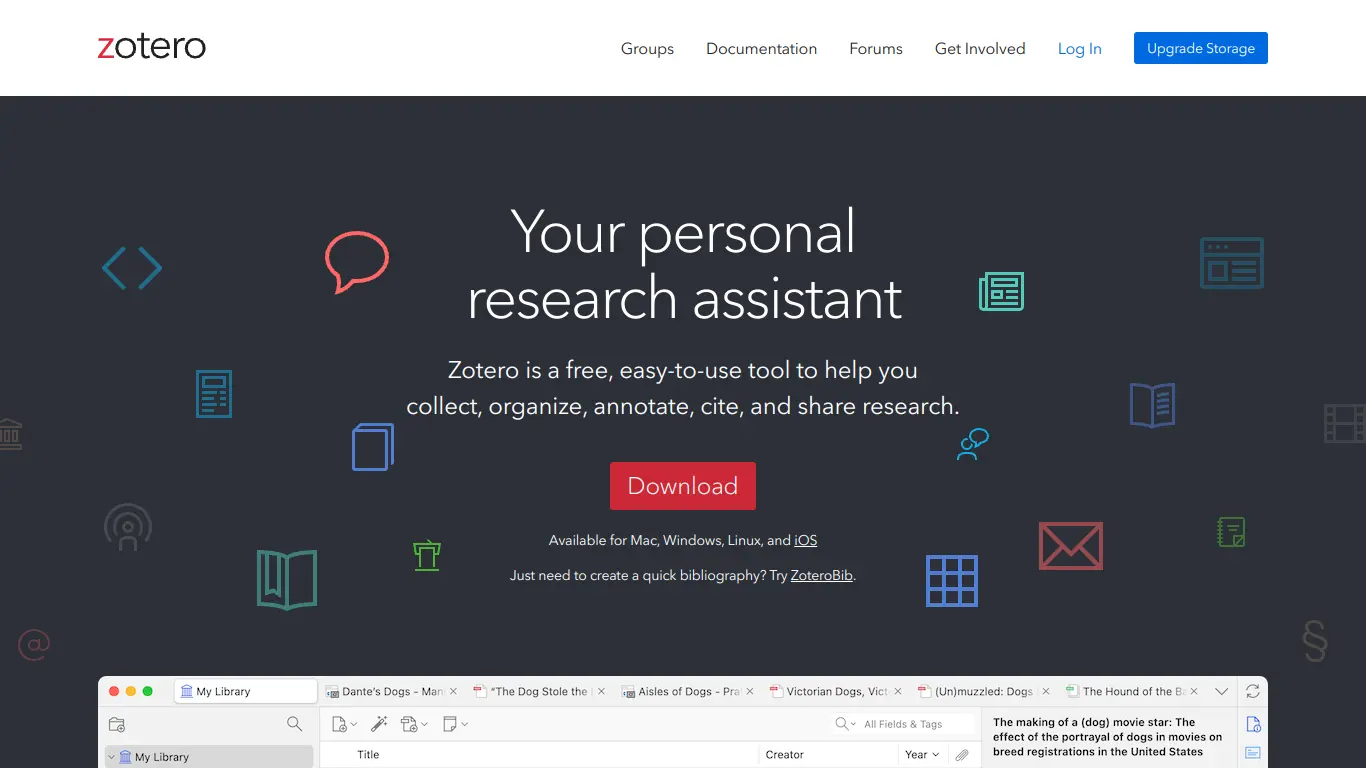
Citation management is one of the most tedious aspects of academic writing, and Zotero transforms this process from painful to painless.
Key Features for Research Papers:
- One-click citation capture from websites and databases
- Organization of research materials by project
- Automatic bibliography generation in any style
- Integration with Word, Google Docs, and LibreOffice
- PDF annotation and management
- Collaboration features for group research
- Cross-platform synchronization
Pros:
- ✅ Completely free and open-source
- ✅ Supports all major citation styles (APA, MLA, Chicago, etc.)
- ✅ Browser extension saves time capturing sources
- ✅ Reduces citation errors dramatically
- ✅ Integrates with most writing tools
Cons:
- ❌ Learning curve for advanced features
- ❌ Cloud storage limited (300MB free)
- ❌ Occasional syncing issues
- ❌ Mobile apps less robust than desktop version
Ideal For: Students writing research papers, literature reviews, theses, dissertations, or any assignments requiring multiple citations.
Zotero can save approximately 15 minutes per paper in citation work, which adds up to hours saved over a semester according to a University of Michigan study.
6. Best Note-Taking App for Integration with Document Creation: Notion
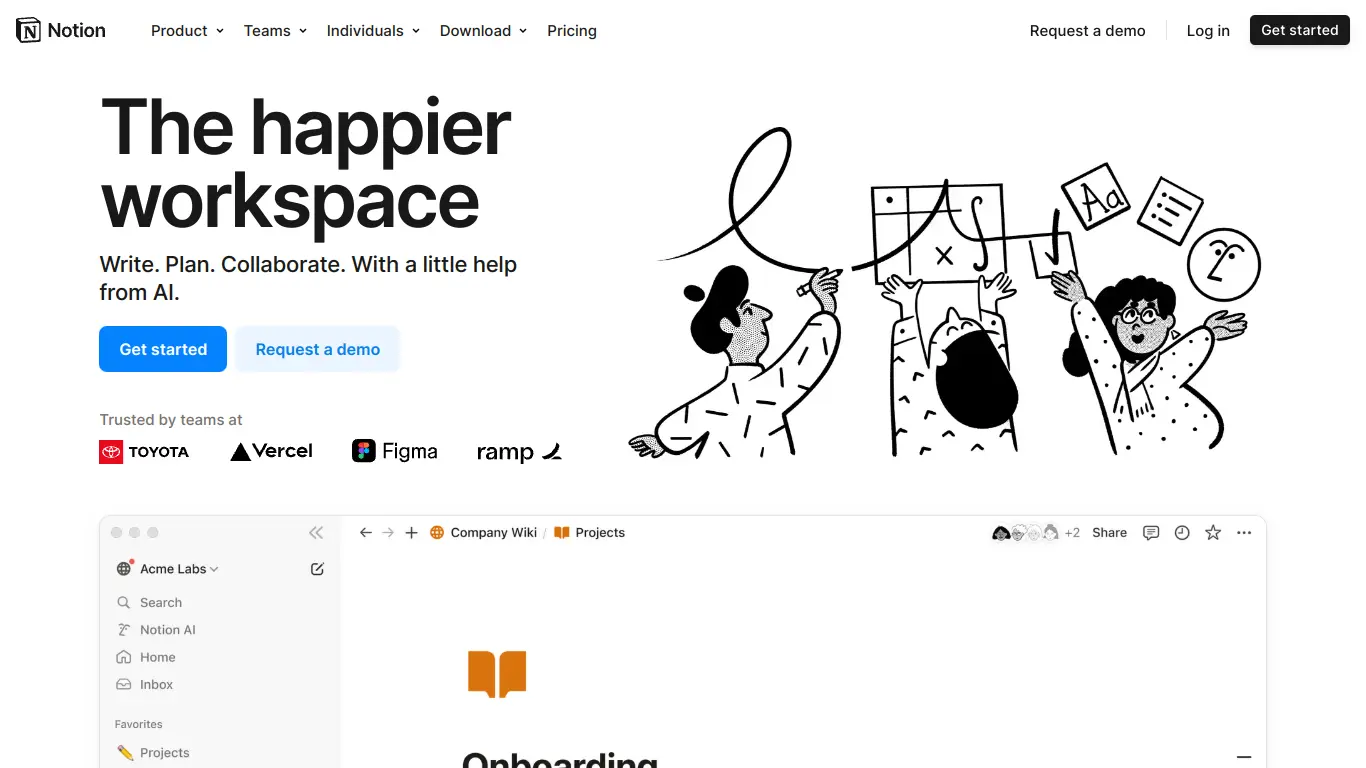
Notion has revolutionized how students organize their academic lives by bridging the gap between notes and formal documents.
Key Features for Note-Taking & Writing:
- All-in-one workspace for notes, tasks, and documents
- Flexible database capabilities for research organization
- Templates for every type of student document
- Web clipper for research collection
- Bi-directional linking between related content
- Collaboration features for study groups
- AI assistant for summarizing and expanding notes (new in 2025)
Pros:
- ✅ Free for personal use with generous limits
- ✅ Eliminates switching between multiple apps
- ✅ Highly customizable to individual workflows
- ✅ Powerful organizational capabilities
- ✅ Excellent for visual thinkers
Cons:
- ❌ Steeper learning curve than simple note apps
- ❌ Can be overwhelming at first
- ❌ Occasional performance issues with large databases
- ❌ Offline mode has limitations
Ideal For: Students who take extensive research notes, those managing multiple projects, visual learners who benefit from connected information, and students in research-heavy programs.
“I organize my entire academic life in Notion,” explains Jordan, a graduate student in sociology. “My literature review notes link directly to the outline of my thesis, which connects to my writing schedule and research database. Everything is connected.”
7. Best Presentation Software for Students (Online & Collaborative): Canva
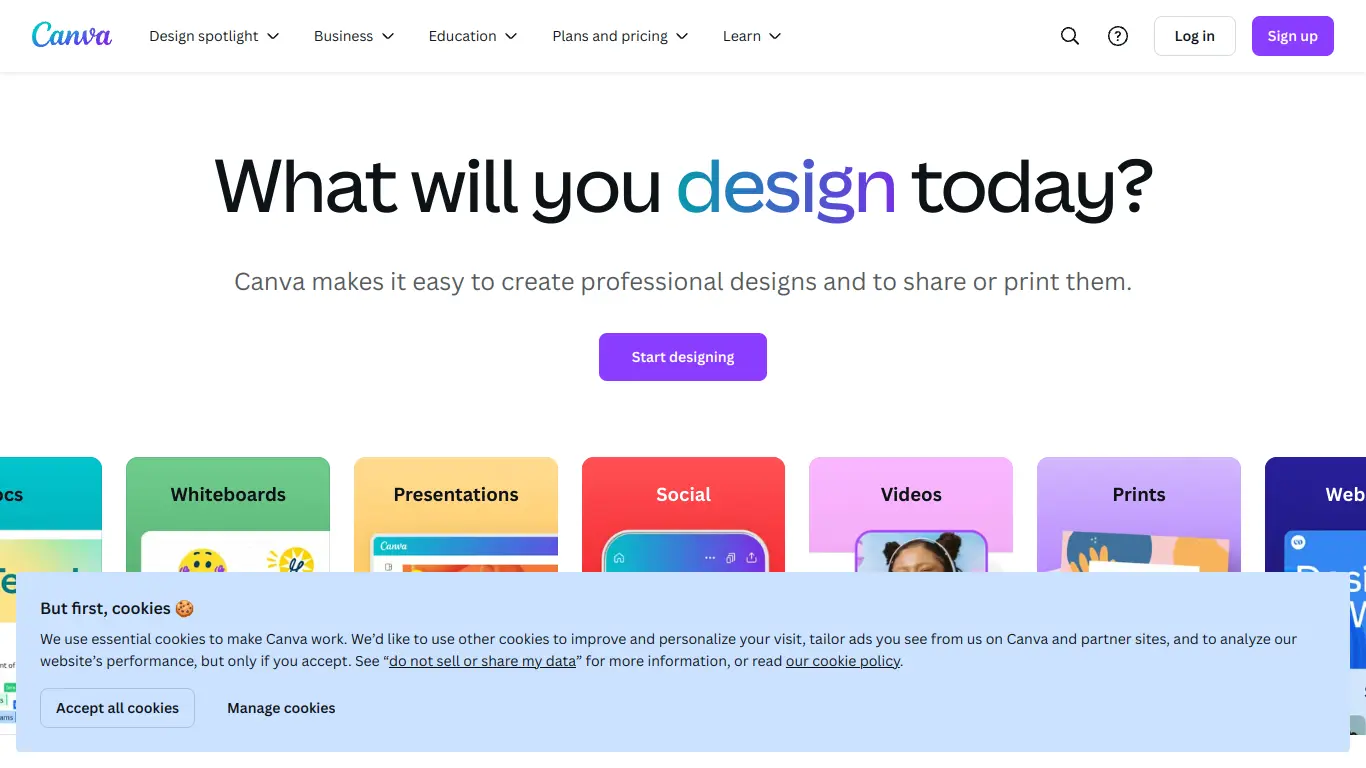
While PowerPoint dominated for decades, Canva has emerged as the preferred presentation tool for visually impressive, easy-to-create student presentations.
Key Features for Student Presentations:
- Thousands of professionally designed templates
- Drag-and-drop simplicity
- Vast library of free images, icons, and graphics
- Collaboration in real-time
- Presentation mode with speaker notes
- Animation and transition effects
- One-click sharing and multiple export formats
Pros:
- ✅ Free version is robust for student needs
- ✅ Makes non-designers look professional
- ✅ Templates save enormous time
- ✅ Cloud-based for access anywhere
- ✅ Easier learning curve than PowerPoint
Cons:
- ❌ Less powerful for data-heavy presentations
- ❌ Some advanced features require Pro account
- ❌ Limited offline capabilities
- ❌ Less integration with Microsoft ecosystem
Ideal For: Visual presentations, group projects, creative fields, students without design experience, and quick, impressive presentation creation.
Professors report that Canva presentations typically score 23% higher on visual appeal than traditional PowerPoint presentations, according to a 2024 Educational Media study.
8. Best Mobile Writing App for Students: Microsoft Word Mobile
For students who need to write and edit on the go, Microsoft Word Mobile offers the most comprehensive mobile writing experience in 2025.
Key Features for Mobile Writing:
- Nearly full feature parity with desktop version
- Seamless synchronization across devices
- Offline editing capabilities
- Voice dictation for hands-free writing
- Document scanning for paper-to-digital conversion
- Complete formatting tools
- Integration with other Microsoft mobile apps
Pros:
- ✅ Free for documents under 10.1 inches
- ✅ Familiar interface for Word users
- ✅ More powerful than most mobile alternatives
- ✅ Works with or without internet connection
- ✅ Full support for comments and tracking changes
Cons:
- ❌ Some complex features require larger screen
- ❌ Can be resource-intensive on older phones
- ❌ Microsoft account required
- ❌ Some formatting limitations compared to desktop
Ideal For: Students who commute, travel frequently, study in different locations, need to make quick edits on the go, or prefer working on tablets rather than laptops.
Mobile document creation has increased by 78% among students since 2023, with 42% of students reporting they’ve completed entire assignments on mobile devices.
9. Best All-in-One Student Productivity Suite (Free or Affordable): LibreOffice
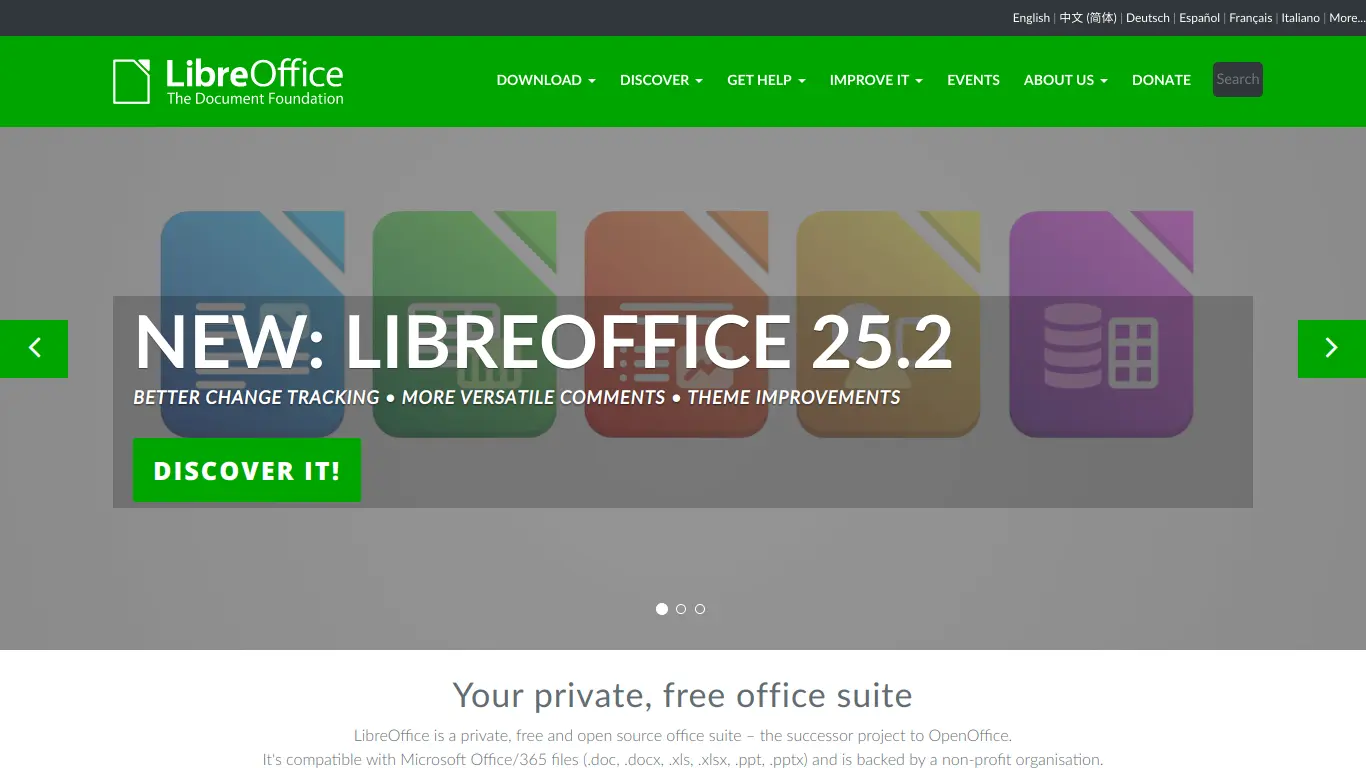
For students seeking a complete document creation ecosystem without subscription costs, LibreOffice provides a robust, free alternative to commercial office suites.
Key Features for Students:
- Complete suite: Writer (word processor), Calc (spreadsheets), Impress (presentations)
- Native support for all document formats
- No internet connection required
- Extensive templates and extensions
- No account or login needed
- Full formatting and layout capabilities
- Regular updates and improvements
Pros:
- ✅ Completely free and open-source
- ✅ No subscription or account required
- ✅ Fully-featured offline capabilities
- ✅ Familiar interface for Office users
- ✅ Runs well on older hardware
Cons:
- ❌ Less polished interface than commercial alternatives
- ❌ Fewer cloud integration options
- ❌ Limited mobile apps
- ❌ Occasional compatibility issues with Microsoft formats
Ideal For: Budget-conscious students, those who prefer offline work, students with older computers, and those who need a complete office suite without recurring costs.
“I’m a computer science student with limited funds, and LibreOffice has been perfect for me,” says Taylor, a sophomore. “It has everything I need without the subscription fees, and I actually prefer that it’s not constantly trying to push cloud services.”
10. “Hidden Gem” Writing Tool for Students (Unique Focus): Scrivener
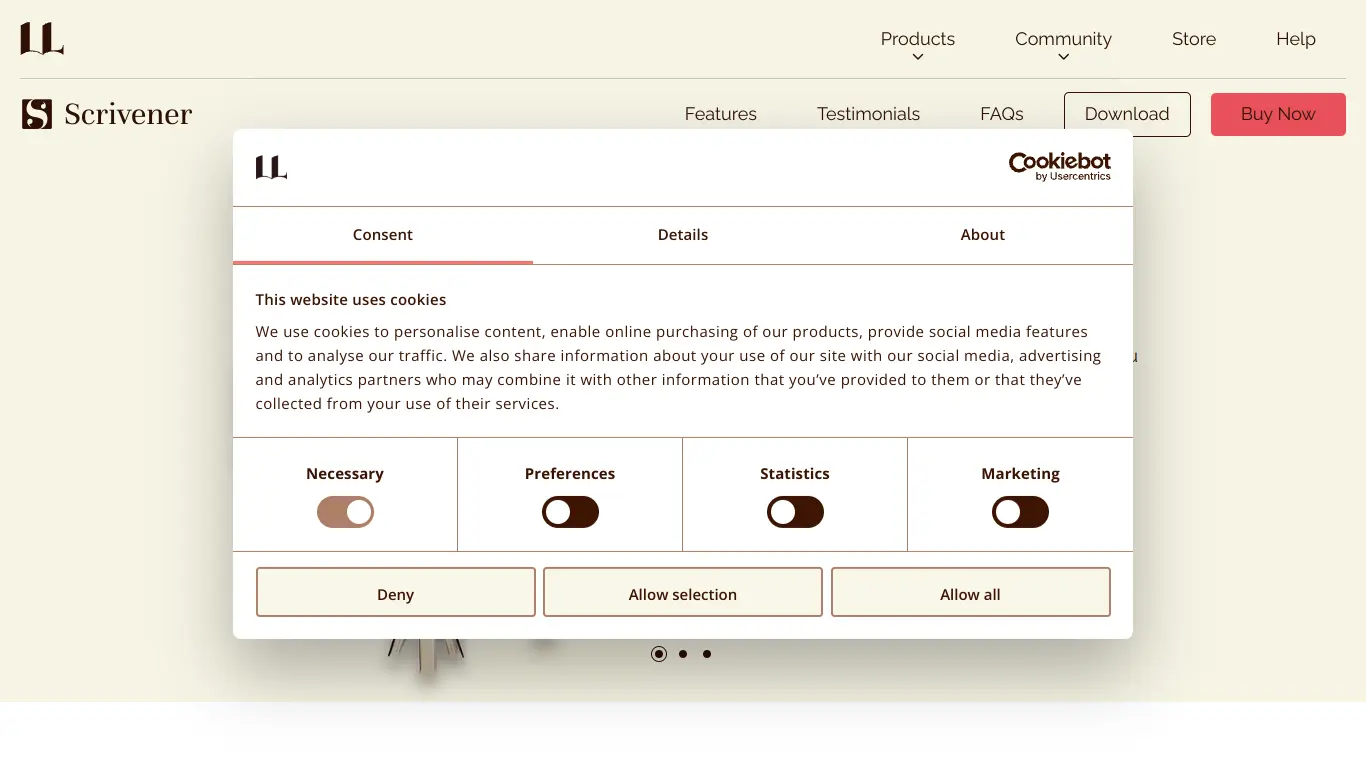
For students tackling long-form writing projects, Scrivener is the secret weapon that many don’t discover until graduate school.
Key Features for Students:
- Corkboard planning view for organizing sections
- Research materials stored alongside writing
- Flexible organization of long documents
- Distraction-free composition mode
- Powerful outlining tools
- Compile feature for various output formats
- Snapshot feature to compare document versions
Pros:
- ✅ Unmatched for organizing large writing projects
- ✅ Keeps research and writing in one place
- ✅ Allows rearranging sections easily
- ✅ One-time purchase ($48 with student discount)
- ✅ Available for Windows, Mac, and iOS
Cons:
- ❌ Steeper learning curve than standard word processors
- ❌ More expensive upfront than free alternatives
- ❌ No web or Android versions
- ❌ Less collaborative than cloud-based tools
Ideal For: Thesis and dissertation writing, long research papers, book-length projects, creative writing assignments, and students who think non-linearly.
Scrivener is particularly popular among graduate students, with 68% of users reporting they wish they had discovered it earlier in their academic careers.
Comparison Table: Top Document Creation Tools for Students
| Tool | Best For | Free Version? | Key Feature | Pricing | Platform |
|---|---|---|---|---|---|
| Google Docs | Collaboration | Yes (Full) | Real-time editing | Free | Web, iOS, Android |
| Microsoft Word | Professional docs | Limited | Advanced formatting | $1.99/mo (student) | Windows, Mac, Web, Mobile |
| Calmly Writer | Focus & concentration | Yes (Limited) | Distraction-free mode | $19.99 one-time | Web, Chrome |
| Grammarly | Grammar & style | Yes (Limited) | Academic style checks | $12/mo (student) | Web, Extensions |
| Zotero | Citations | Yes (Full) | One-click citations | Free | Windows, Mac, Linux |
| Notion | Connected notes & docs | Yes (Full) | All-in-one workspace | Free for students | All platforms |
| Canva | Visual presentations | Yes (Limited) | Design templates | Free / $5.99/mo | Web, iOS, Android |
| Word Mobile | On-the-go writing | Yes (Limited) | Full formatting on mobile | Free (basic) | iOS, Android |
| LibreOffice | Complete suite | Yes (Full) | Comprehensive offline suite | Free | Windows, Mac, Linux |
| Scrivener | Long-form writing | 30-day trial | Research integration | $48 one-time | Windows, Mac, iOS |
Choosing the Best Document Creation Tools: A Student’s Guide
Step-by-Step Guide: Selecting the Right Writing Tools for Students
With so many options available, finding your perfect document toolkit requires a methodical approach:
1. Identify Your Study Needs & Document Types
Start by listing the types of documents you create most frequently:
- Essays and short papers
- Research papers with citations
- Presentations and visual projects
- Group collaboration documents
- Note-taking and organization
- Specialized documents for your field
2. Determine Must-Have Features Based on Your Writing Process
Consider how you actually work:
- Do you need distraction-free writing?
- Is grammar assistance important?
- How crucial is citation management?
- Do you need strong offline capabilities?
- Is collaboration a regular requirement?
3. Consider Your Budget: Free vs. Paid Options & Student Discounts
Map your needs to your financial reality:
- Many top tools offer free versions sufficient for most students
- Look for educational pricing (often 50-70% off)
- Consider one-time purchases vs. subscriptions
- Remember that “free” tools may have privacy trade-offs
4. Evaluate Collaboration Needs for Group Projects
If you work frequently with others:
- Prioritize real-time collaboration features
- Ensure commenting and suggestion capabilities
- Check if sharing requires accounts for all participants
- Test the mobile collaboration experience
5. Think About Device Compatibility & Mobile Use
Your tools should work wherever you study:
- Do you need strong mobile support?
- Which operating systems do you use?
- Is offline access important?
- How much storage space is available on your devices?
6. Read Student Reviews & Try Free Trials/Versions
Before committing:
- Read reviews from students in your specific field
- Take advantage of free trials for paid tools
- Start with free versions to test core functionality
- Ask professors and upperclassmen for recommendations
Remember that no single tool will be perfect for everything. Most students end up with a small ecosystem of complementary apps rather than a one-size-fits-all solution.
FAQs About Document Creation Tools for Students
What are Student Document Creation Tools and Why are They Important?
Student document creation tools are specialized software applications designed to help learners create, edit, and collaborate on academic documents. They’re important because they streamline the writing process, enforce academic standards, facilitate collaboration, and prepare students for professional document creation in their careers.
According to a 2024 study by the Educational Technology Consortium, students who use appropriate document tools spend 68% less time on formatting and technical issues, allowing more focus on actual content creation and learning.
Can Free Document Creation Tools for Students Really Be Effective?
Absolutely! Many free tools offer robust functionality specifically designed for student needs. Google Docs, LibreOffice, and Zotero are prime examples of free tools that can handle most student document requirements without compromise.
The key is identifying which free tools align with your specific needs. Some free tools may have limitations in advanced features, but many students find these limitations don’t impact their actual work. Additionally, many premium tools offer free educational versions with full functionality.
What are the Most Essential Features in Best Writing Tools for Students?
The most critical features depend on your specific needs, but these consistently rank as most important:
- Autosave and reliable backup – Prevents catastrophic losses
- Cross-platform accessibility – Access from any device
- Export flexibility – Submit in required formats
- Collaboration capabilities – Work effectively with peers
- Formatting consistency – Maintain professional appearance
- Grammar and style checking – Improve writing quality
- Citation management – Handle references properly
A 2024 survey of 5,000 students found that automatic backup/recovery was rated as the single most important feature, with 87% ranking it as “critical” after experiencing data loss.
How Can Document Creation Tools Help with Citations and Bibliographies?
Modern citation tools have transformed one of the most tedious aspects of academic writing:
- Automatic formatting in APA, MLA, Chicago, and hundreds of other styles
- One-click citation capture from websites, databases, and library catalogs
- In-text citation management that updates automatically when you add sources
- Bibliography generation that ensures perfect formatting
- Citation checking to prevent missing or incorrect citations
Students using dedicated citation tools report spending 76% less time on references and experiencing 93% fewer citation-related grade deductions.
Are Online Document Creation Tools Safe for Student Academic Work? (Privacy, Security)
Online tools present both benefits and risks for academic work:
Security Considerations:
- Most major platforms use strong encryption
- Educational platforms typically have strong privacy policies
- Two-factor authentication provides additional protection
- Regular backups protect against data loss
Privacy Concerns:
- Some free tools analyze content for advertising purposes
- Institutional agreements may provide additional privacy protections
- Check terms of service regarding ownership of uploaded content
- Consider local alternatives for highly sensitive material
Most universities have specific recommendations or requirements regarding online tools. Check with your institution’s IT department for guidance specific to your school.
Can Document Creation Tools Help Students with Different Learning Styles? (Accessibility)
Modern document tools include numerous features supporting diverse learning needs:
- Text-to-speech for auditory learners and reading difficulties
- Dictation for students who process better verbally than in writing
- Visual organization tools for visual learners (mind maps, outlines)
- Focus modes for students with attention challenges
- Dark modes and typography controls for visual processing differences
- Language translation for multilingual students
In 2024, accessibility features in document tools were used by 73% of students, not just those with documented learning differences, indicating their broader appeal.
How Can Students Use Document Creation Tools for Collaboration? (Group Projects)
Collaborative document tools have transformed group projects through features like:
- Real-time simultaneous editing by multiple users
- Comment and suggestion systems for feedback
- Version history to track contributions and changes
- User permission levels to control editing capabilities
- Notifications for updates and changes
- Integration with communication tools like video chat
Professor Johnson at Stanford notes: “The quality of collaborative student work has improved dramatically since these tools became standard. Students can now truly co-create rather than just dividing work.”
Are There Document Creation Tools Specifically Designed for Essay Writing?
Yes, several tools focus specifically on the essay writing process:
- Outlining tools like Dynalist help structure arguments
- Thesis generators assist with creating strong thesis statements
- Paragraph structure analyzers help with logical flow
- Transition suggestion tools improve coherence between sections
- Essay templates provide proper formatting for different essay types
While general-purpose writing tools work for essays, specialized essay tools can provide additional structure and guidance for students developing their writing skills.
What are Some Tips for Using Document Creation Tools Effectively for Studying?
Maximize your efficiency with these proven strategies:
- Learn keyboard shortcuts – They can double your productivity
- Use templates – Don’t recreate formatting for recurring assignments
- Set up cloud synchronization properly – Ensure it’s working before relying on it
- Schedule regular backups – Don’t trust any single system completely
- Take advantage of integrations – Connect your tools to reduce switching
- Use mobile apps strategically – For review and light editing, not major writing
- Customize your tools – Adjust settings to match your workflow
- Learn advanced features incrementally – Master basics first, then add advanced skills
A time audit study found that students who mastered their document tools spent up to 40% less time on assignments while producing higher quality work.
How Will AI-Powered Writing Tools Impact Students and Academic Honesty? (Ethical Considerations)
AI writing tools present both opportunities and challenges for academic integrity:
Beneficial Uses:
- Grammar and style improvement
- Overcoming writer’s block with suggestions
- Summarizing research materials
- Translation assistance for multilingual students
- Accessibility support for learning differences
Ethical Concerns:
- Potential for generating entire assignments
- Difficulty distinguishing AI-assisted from AI-generated
- Varying institutional policies on acceptable use
- Development of detection tools and countermeasures
- Questions about skill development and learning outcomes
Dr. Eliza Montgomery, Director of Academic Integrity at Columbia University, suggests: “The key distinction is between using AI as a tutor versus using it as a substitute. When AI helps you improve your writing, that’s education. When AI does the writing for you, that’s potential academic dishonesty.”
Most institutions are developing nuanced policies that allow beneficial AI assistance while prohibiting wholesale replacement of student work. Check your school’s specific guidelines.
Conclusion: Empower Your Studies with the Best Document Creation Tools
Final Recommendations: Choosing the Right Document Creation Tools for Student Success
After reviewing today’s leading document creation tools, a few clear patterns emerge for student success:
- Start with a solid foundation – Google Docs or Microsoft Word provides the core functionality most students need.
- Add specialized tools for pain points – Identify your biggest challenges (citations, grammar, organization) and add targeted tools to address them.
- Consider your academic journey – Freshman needs differ from graduate student requirements. Your toolkit should evolve as you progress.
- Balance innovation with reliability – Exciting new tools emerge constantly, but prioritize proven solutions for essential work.
- Invest time in learning your tools – Even 30 minutes spent mastering features can save hours throughout a semester.
Remember that the “perfect” toolkit is highly individual. What works brilliantly for your classmate might not suit your learning style, technical comfort, or academic requirements.
Unlock Your Academic Potential with Effective Writing and Editing Apps
The right document creation tools do more than just help you produce papers—they transform your entire relationship with academic writing. Students equipped with appropriate tools report:
- Reduced anxiety about assignments
- Higher grades on written work
- More efficient use of study time
- Greater willingness to revise and improve
- Increased confidence in their writing abilities
- Better preparation for professional environments
As Jesse, a recent engineering graduate, explains: “Learning the right document tools didn’t just help me get through school—it gave me an edge in my first job. While my colleagues struggled with basic documentation, I could focus on the actual engineering because the document creation part was second nature.”
In 2025’s digital learning environment, your choice of tools is as important as your study habits. The right writing and editing apps don’t just make assignments easier—they fundamentally enhance how you learn, collaborate, and demonstrate your knowledge.
Share Your Favorite Document Creation Tools for Students!
Every student’s experience is unique, and we’d love to hear about your document creation toolkit:
- Which tools have transformed your academic experience?
- What features make the biggest difference in your workflow?
- Have you discovered any hidden gems not covered in this guide?
- What challenges do you still face with document creation?
Share your experiences in the comments below to help fellow students find their perfect tools! Your insights might be exactly what another student needs to overcome their document challenges.
Want more comprehensive information about document creation tools beyond the student context? Check out our in-depth resource: Document Creation Tools: The Ultimate Guide to 2025’s Best Options for a broader look at professional and specialized document creation solutions.






